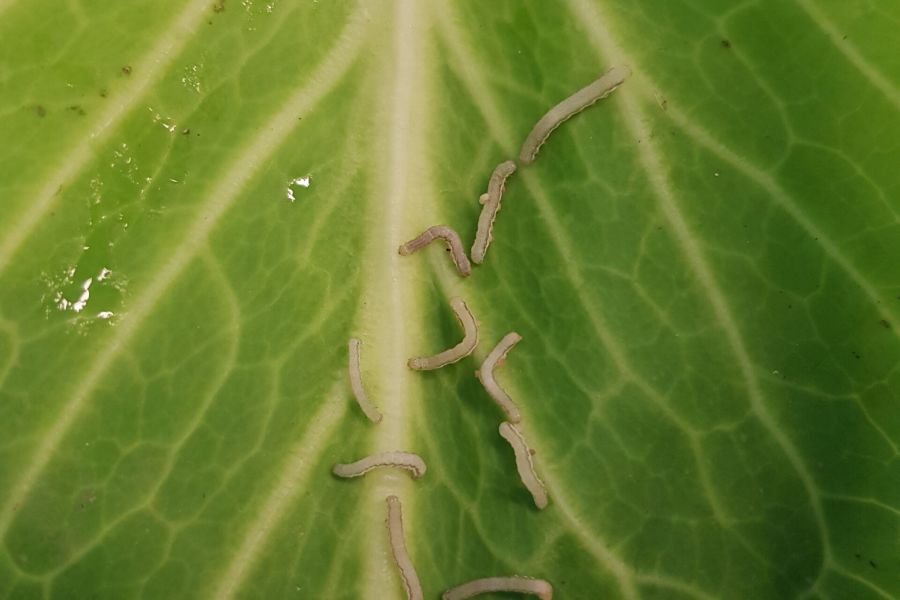One-year update by Hannah: are effects of light pollution equal for a caterpillar, moth and bird?

PhD candidate Hannah Broeckx provides us with an update of her first year.
Insect-predator interactions in the spotlight
By Hannah Broeckx
I am one year into my research on the effect of artificial light at night (ALAN) on insect-predator interactions. What an interesting process it has been so far!
ALAN has been shown to impact organisms in a variety of ways. Through species interactions, these effects can cascade throughout the whole ecosystem, amplifying the total impact of light. This can have serious biodiversity implications and can thereby also impact natural services important to humans, like pollination and pest control. With this research I will focus on some specific interactions, such as bat predation on flying insects and caterpillar predation by birds.
A great part of my research is situated in cities, the places where we can find most light pollution. Monitoring insects in the cities – typically characterized by low insect numbers – has been a challenge. Therefore, my first year was mainly dedicated to finding the most optimal trapping technique. Odor traps (with pheromones, flower, or rotting fruit scent), sticky sheets, frass traps, light buckets, flight interceptor traps, we tried them all!
With these flight interceptor traps we also initiated our first field study. How does light intensity impact bat and insect activity around lampposts, within the city? In collaboration with the cities Rotterdam and The Hague we selected suitable locations, such as parks and green lanes, where lampposts could be programmed to alternate between high and low light intensities on consecutive nights. Here we simultaneously monitored bat and insect activity throughout the night. The bat work was carried out by Sander Buddendorf. His automated bat detectors recorded high amounts of bat activity, while insect monitoring was still not effective enough. However, in the more insect rich areas, close to waterbodies, we did see a response of the insects to light intensity. High intensities attracted more insects, making them vulnerable to opportunistic bat predation.
During winter time, when animal activity is low, I was able to set up my first lab experiment. This time focussing on bird predation. Does ALAN impact the onset of great tit activity and can they start foraging effectively under these light conditions? And what about caterpillars, do they behave differently under the risk of predation in dark and lit nights? At the bird facilities of NIOO, we put together plants, caterpillars and birds in climate chambers, exposing them to either dark or lit night conditions. Measurements such as great tit activity, predation rates, eaten leaf surfaces, caterpillar weight and caterpillar positions are compared between treatments. I can already report that we did see changes in bird activity, as well as caterpillar behaviour.
In 2023, we will work further on the bat-insect interactions underneath lampposts with yet another technique: sticky sheets under camera surveillance. In addition, we will set up new projects. We will compare bird and bat diets between urban and rural habitats and investigate if light has an impact on these diets. Furthermore, we will test predation rates on caterpillar clay models that are put out in the field under different light colours.
Busy times, let’s gather some data!

The BioClock Consortium is funded by the NWA-ORC programme of the Dutch Research Council (NWO; project number 1292.19.077).